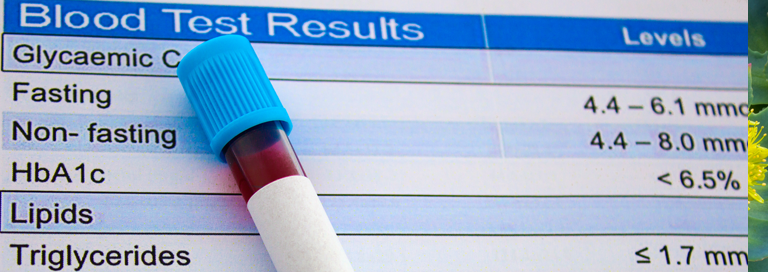A few years ago, the AHA and the American College of Cardiology rewrote their cholesterol guidelines.
The results were hardly surprising.
They recommended that almost every older American take a cholesterol-lowering statin drug.1 The new recommendations more than doubled the number of patients eligible for statins.
If you’re a man 60 or older, the likelihood you’ll be placed on a statin is a staggering 87%!2 That’s a 600% increase in three decades.3
It’s a huge scam.
In fact, the theory that cholesterol causes heart disease is one of the biggest myths sold to the public.
After all, Big Pharma built a trillion-dollar industry on this fake science.4 Big Agra has also made billions from their processed “heart-healthy, low-cholesterol” fake foods.
They’re not going to allow their cronies at the FDA or anywhere else to come clean now. There’s too much money at stake.
You know how strongly I feel about the myth that cholesterol causes heart disease and that Big Pharma’s drugs are the only way to rid your body of this “dangerous” cholesterol.
It’s a Big Lie that has taken us in the wrong direction as we watch heart disease continue to skyrocket in this country — and the world.
You see, your cholesterol levels are supposed to be high.
In fact, the more cholesterol you have, the better your life will be. It is the mother of your most important hormones — the ones that keep you smart, sexy, happy, strong, and mobile.
Yet, modern medicine has declared war on cholesterol. And it’s a very bad idea to declare war on a natural part of your own body.
The way modern medicine treats cholesterol is the same as saying, “You have osteoporosis. We have to take your bones out.”
I have a better idea.
What exactly is cholesterol?
Cholesterol is a molecule
that’s made in your liver and consumed through the foods you eat.It’s one of your body’s most vital substances. It enables your liver to synthesize acids, hormones, and vitamins that are utterly essential to a happy and healthy life.
Cholesterol is the part of your body that gives life its gusto:
- Your brain is made of it
- Your sex and adrenal hormones are made of it
- Your body can’t digest fat without it
- Your cell walls are made of it
- Your body can’t produce vitamin D without it
Your cholesterol levels are supposed to be high — in spite of what mainstream medicine and the pharmaceutical companies have to say about it.
And contrary to what you may have heard, there’s no such thing as “good” or “bad” cholesterol. Cardiologists like to throw these terms around, but it’s extremely misleading.
For starters, HDL and LDL aren’t actually cholesterol. Cholesterol is cholesterol. Let me explain…
Because cholesterol isn’t water soluble, it has to travel through your bloodstream in little packages called lipoproteins — low-density lipoproteins (LDL) and high-density lipoproteins (HDL). There are three other lipoproteins, by the way… chylomicrons, VLDL, and IDL.
LDL is present in plaque build-up in your arteries. That’s why it was labeled “bad” cholesterol.
Two easy ways to raise your cholesterol
Many studies confirm what I tell my patients — low cholesterol is worse for you than high cholesterol.5
By consuming “low-cholesterol” foods and taking cholesterol-busting meds, you’re inhibiting your liver from producing one of your body’s vital substances.
Even worse, you are destroying a part of your body that’s there to protect you from heart disease.
At the Sears Institute, I help my patients raise HDL cholesterol naturally using a variety of supplements. Here are two to try today.
-
- Take this B vitamin. Niacin, or vitamin B3, plays an active role in more than 15 metabolic reactions. And it raises HDL.6 It has been found to increase HDL by 20% to 35%. The key to niacin is using the right amount and the right kind. I recommend sustained-release niacin (sometimes referred to as extended-release). Immediate-release niacin is also safe but tends to cause hot flashes. Absorption is important, so take your niacin with dinner. I recommend 50 mg of niacin once a day.
- Try astaxanthin. The FDA has weirdly classified astaxanthin as a red food dye, but it’s actually the world’s strongest antioxidant. But where astaxanthin really shines is with cholesterol. It can boost your HDL more effectively than anything in existence. Not long ago, the first-ever randomized, placebo-controlled human trial demonstrated that astaxanthin could raise HDL levels by up to 15%.7 One of the best sources is wild-caught salmon, which contains far more natural astaxanthin than farm-raised salmon. Four ounces of farm-raised Atlantic salmon contains about 0.5 to 1.1 mg of astaxanthin. Wild-caught sockeye salmon contains 4.5 mg. You can also get astaxanthin in other pink-colored seafood like lobster, crab, and shrimp. If you don’t like fish, a supplement will do the trick. I recommend you take at least 2.5 mg of astaxanthin a day.
To Your Good Health,
![]()
Al Sears, MD, CNS
References:
1. Sagon C. “87 Percent of Men Aged 60 Plus Should Take a Statin?” AARP Healthy Living. Accessed August 2, 2017.
2. M., et al. “Application of new cholesterol guidelines to a population-based sample.” N Engl J Med. 2014
3. Byrne P, et al. “Statins for primary prevention of cardiovascular disease: modeling guidelines and patient preferences based on an Irish cohort.” Br J Gen Pract. 2019 Jun;69(683):e373-e380
4. Demasi M. “Statin wars: have we been misled about the evidence? A narrative review.” Br J Sports Med. 2018 Jul;52(14):905-909.
5. Jacobs D et al. Circulation. 1992;86:1046–60.
6. Rossi CS, Siliprandi N. “New perspectives on the use of niacin in the treatment of lipid disorders” Arch Intern Med. 2004;164(7):697-705.
7. Yoshida H, Yanai H., “Administration of natural astaxanthin increases serum HDL-cholesterol and adiponectin in subjects with mild hyperlipidemia.” Atherosclerosis. 2010 Apr;209(2):520 3. doi: 10.1016/j.atherosclerosis. 2009.10.012.

